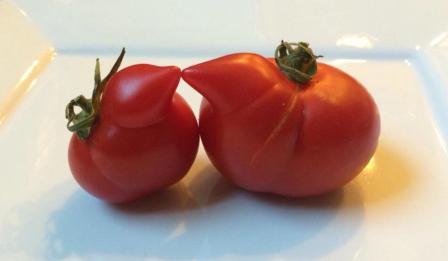Jordan began by dropping some serious data: Somewhere between 40%-50% of all food from farm to fork to landfill is wasted. There's waste all along the supply chain: producers, distributors, and our own kitchens. 25% of all freshwater goes to food we never eat. Roughly 20%-40% of all produce is left on the farm, mostly for cosmetic reasons. When a fruit or vegetable is a little smaller or bigger, or has an unusual shape or color, or a spot or scar, it's largely considered inedible. Here are some things you can keep in mind to lessen the environmental and financial effects of food waste:
- "Expiration dates" actually usually apply to peak freshness. Use your senses to assess foods slightly past their expiration dates, including eggs and pasteurized milk.
- Produce with a cosmetic blemish, scrape, scar, or bruise is still completely edible. Cut off the offending piece and chow down.
- Produce that off-gasses the most, like bananas and tomatoes, should be stored on their own so they don't cause surrounding produce to go bad more quickly.
- Don't stock your fridge and pantry so many layers deep that you don't know what you have. Check your shelves regularly and make meals of foods you already have, rather than stocking up and then neglecting your stores.
- Wilted greens like spinach or kale can be used in smoothies if they're no longer appealing for a salad.
- Make an "eat me first" bin or drawer in the fridge, so you'll remember to eat the things that will go bad first rather than keeping them in the back of the fridge until they're past usability.
For more tips and tricks, check out www.UglyFruitAndVeg.org
Photo credit: The Ugly Fruit And Veg Campaign www.UglyFruitAndVeg.org
Tidak ada komentar:
Posting Komentar